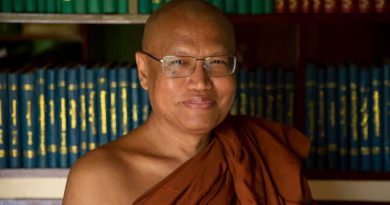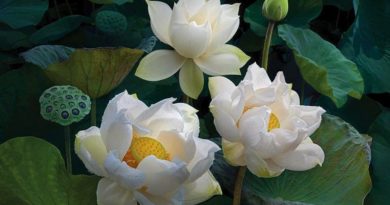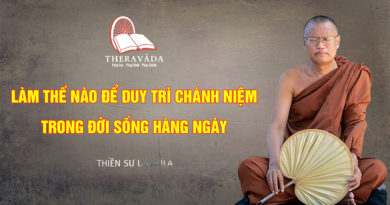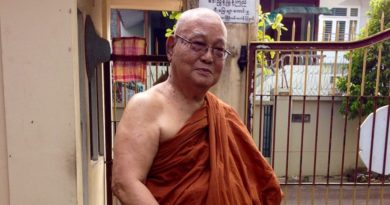Code Of Discipline For Vipassana Courses
MAIN CONTENT
- Introduction to the Technique & Code of Discipline
- What Vipassana is not:
- What Vipassana is:
- Meditation and Self-discipline
- Persons with Serious Mental Disorders
- The Code of Discipline
- The Precepts
- Acceptance of the Teacher and the Technique
- Other Techniques, Rites, and Forms of Worship
- Interviews With the Teacher
- Noble Silence
- Yoga and Physical Exercise
- Religious Objects, Rosaries, Crystals, Talismans, etc.
- Intoxicants and Drugs
- Tobacco
- Food
- Clothing
- Outside Contacts
- Music, Reading and Writing
- Tape Recorders and Cameras
- Course Finances
- Summary
- THE COURSE TIMETABLE
Introduction to the Technique & Code of Discipline
Vipassana is one of India’s most ancient meditation techniques. Long lost to humanity, it was rediscovered by Gotama the Buddha more than 2500 years ago. The word Vipassana means seeing things as they really are. It is the process of self- purification by self-observation. One begins by observing the natural breath to concentrate the mind. With a sharpened awareness one proceeds to observe the changing nature of body and mind and experiences the universal truths of impermanence, suffering and egolessness. This truth-realization by direct experience is the process of purification. The entire path (Dhamma) is a universal remedy for universal problems and has nothing to do with any organized religion or sectarianism. For this reason, it can be freely practised by everyone, at any time, in any place, without conflict due to race, community or religion, and will prove equally beneficial to one and all.
What Vipassana is not:
- It is not a rite or ritual based on blind faith.
- It is neither an intellectual nor a philosophical entertainment.
- It is not a rest cure, a holiday, or an opportunity for socialising.
- It is not an escape from the trials and tribulations of everyday life.
What Vipassana is:
- It is a technique that will eradicate suffering.
- It is an art of living that one can use to make positive contributions to society.
- It is a method of mental purification which allows one to face life’s tensions and problems in a calm, balanced way.
Vipassana meditation aims at the highest spiritual goals of total liberation and full enlightenment. Its purpose is never simply to cure physical disease. However, as a by-product of mental purification, many psychosomatic diseases are eradicated. In fact, Vipassana eliminates the three causes of all unhappiness: craving, aversion and ignorance. With continued practice, the meditation releases the tensions developed in everyday life, opening the knots tied by the old habit of reacting in an unbalanced way to pleasant and unpleasant situations.
Although Vipassana was developed as a technique by the Buddha, its practice is not limited to Buddhists. There is absolutely no question of conversion. The technique works on the simple basis that all human beings share the same problems and a technique which can eradicate these problems will have a universal application. People from many religious denominations have experienced the benefits of Vipassana meditation, and have found no conflict with their profession or faith.
Meditation and Self-discipline
The process of self-purification by introspection is certainly never easy–students have to work very hard at it. By their own efforts students arrive at their own realizations; no one else can do this for them. Therefore, the meditation will suit only those willing to work seriously and observe the discipline, which is there for the benefit and protection of the meditators and is an integral part of the meditation practice.
Ten days is certainly a very short time in which to penetrate the deepest levels of the unconscious mind and learn how to eradicate the complexes lying there. Continuity of the practice in seclusion is the secret of this technique’s success. Rules and regulations have been developed keeping this practical aspect in mind. They are not primarily for the benefit of the teacher or the course management, nor are they negative expressions of tradition, orthodoxy or blind faith in some organized religion. Rather, they are based on the practical experience of thousands of meditators over the years and are both scientific and rational. Abiding by the rules creates a very conductive atmosphere for meditation; breaking them pollutes it.
A student will have to stay for the entire period of the course. The other rules should also be carefully read and considered. Only those who feel that they can honestly and scrupulously follow the discipline should apply for admission. Those not prepared to make a determined effort will waste their time and, moreover, will disturb others who wish to work seriously. A prospective student should also understand that it would be both disadvantageous and inadvisable to leave without finishing the course upon finding the discipline too difficult. Likewise, it would be most unfortunate if, in spite of repeated reminders, a student does not follow the rules and has to be asked to leave.
Persons with Serious Mental Disorders
People with serious mental disorders have occasionally come to Vipassana courses with the unrealistic expectation that the technique will cure or alleviate their mental problems. Unstable interpersonal relationships and a history of various treatments can be additional factors which make it difficult for such people to benefit from, or even complete, a ten-day course. Our capacity as a non-professional volunteer organization makes it impossible for us to properly care for people with these backgrounds. Although Vipassana meditation is beneficial for most people, it is not a substitute for medical or psychiatric treatment and we do not recommend it for people with serious psychiatric disorders.
The Code of Discipline
The foundation of the practice is sila – moral conduct. Sila provides a basis for the development of samadhi – concentration of mind; and purification of the mind is achieved through panna – the wisdom of insight.
The Precepts
All who attend a Vipassana course must conscientiously undertake the following five precepts for the duration of the course:
- to abstain from killing any living creature;
- to abstain from stealing;
- to abstain from all sexual activity;
- to abstain from telling lies;
- to abstain from all intoxicants.
There are three additional precepts which old students (that is, those who have completed a course with S. N. Goenka or one of is assistant teachers) are expected to follow:
- to abstain from eating after midday;
- to abstain from sensual entertainment and bodily decoration; 8. to abstain from using high or luxurious beds.
Old students will observe the sixth precept by having only herbal tea or fruit juice at the 5 p.m. break, whereas new student may have tea with milk and some fruit. The teacher may excuse an old student from observing this precept for health reasons. The seventh and eighth precept will be observed by all.
Acceptance of the Teacher and the Technique
Students must declare themselves willing to comply fully and for the duration of the course with the teacher’s guidance and instructions; that is, to observe the discipline and to meditate exactly as the teacher asks, without ignoring any part of the instructions, nor adding anything to them. This acceptance should be one of discrimination and understanding, not blind submission. Only with an attitude of trust can a student work diligently and thoroughly. Such confidence in the teacher and the technique is essential for success in meditation.
Other Techniques, Rites, and Forms of Worship
During the course it is absolutely essential that all forms of prayer, worship, or religious ceremony–fasting, burning incense, counting beads, reciting mantras, singing and dancing, etc.–be discontinued. All other meditation techniques and healing or spiritual practices should also be suspended. This is not to condemn any other technique or practice, but to give a fair trial to the technique of Vipassana in its purity.
Students are strongly advised that deliberately mixing other techniques of meditation with Vipassana will impede and even reverse their progress. Despite repeated warnings by the teacher, there have been cases in the past where students have intentionally mixed this technique with a ritual or another practice, and have done themselves a great disservice. Any doubts or confusion which may arise should always be clarified by meeting with the teacher.
Interviews With the Teacher
Problems or questions regarding the meditation should be taken only to the teacher for clarification. The time between 12 noon and 1 p.m. is set aside for private interviews. Questions may also be asked in public between 9:00 and 9:30 p.m. in the meditation hall.
Interviews and question times are solely for the purpose of clarifying actual practical problems concerned with the technique. They are not to be regarded as opportunities to indulge in philosophical discussions or intellectual arguments. The unique nature of Vipassana meditation can only be appreciated by putting it into practice and during the course students should concentrate exclusively on this task.
Noble Silence
All students must observe Noble Silence from the beginning of the course until the morning of the last full day. Noble Silence means silence of body, speech, and mind. Any form of communication with fellow student, whether by gestures, sign language, written notes, etc. is prohibited.
Students may, however, speak with the teacher whenever necessary and they may approach the management with any problems related to food, accommodation, health, etc. But even these contacts should be kept to a minimum. Students should cultivate the feeling that they are working in isolation.
Yoga and Physical Exercise
Although physical yoga and other exercises are compatible with Vipassana, they should be suspended during the course because proper secluded facilities are not available at the course site. Jogging is also not permitted. Students may exercise during rest periods by walking in the designated areas.
Religious Objects, Rosaries, Crystals, Talismans, etc.
No such items should be brought to the course site. If brought inadvertently they should be deposited with the management for the duration of the course.
Intoxicants and Drugs
No drugs, alcohol, chewing tobacco or other intoxicants should be brought to the site; this also applies to tranquilizers, sleeping pills, and all other sedatives. Those taking medicines or drugs on a doctor’s prescription should notify the teacher.
Tobacco
For the health and comfort of all students, smoking, chewing tobacco, and taking snuff are not permitted at the course.
Food
It is not possible to satisfy the special food preferences and requirements of all the meditators. Students are therefore kindly requested to make do with the simple vegetarian meals provided. The course management endeavours to prepare a balanced, wholesome menu suitable for meditation. If any students have been prescribed a special diet because of ill-health, they should inform the management at the time of application.
Clothing
Dress should be simple, modest, and comfortable. Tight, transparent, revealing, or otherwise striking clothing (such as shorts, short skirts, tights and leggings, sleeveless or skimpy tops) should not be worn. Sunbathing and partial nudity are not permitted. This is important in order to minimize distraction to others.
Outside Contacts
Students must remain within the course boundaries throughout the course. They may leave only with the specific consent of the teacher. No outside communications is allowed before the course ends. This includes letters, phone calls and visitors. In case of an emergency, a friend or relative may contact the management.
Music, Reading and Writing
The playing of musical instruments, radios, etc. is not permitted. No reading or writing materials should be brought to the course. Students should not distract themselves by taking notes. The restriction on reading and writing is to emphasize the strictly practical nature of this meditation.
Tape Recorders and Cameras
These may not be used except with the express permission of the teacher.
Course Finances
According to the tradition of pure Vipassana, courses are run solely on a donation basis. Donations are accepted only from old students, that is, those who have completed at least one course with S.N. Goenka or an assistant teacher.
In this way course are supported by those who have realized for themselves the benefits of the practice. Wishing to share these benefits with others, one gives a donation according to one’s means and volition. Some taking a course for the first time may give a donation at the end of the course or at any time thereafter.
Such donations are the only source of funding for courses in this tradition around the world. There is not wealthy foundation or individual sponsoring them. Neither the teachers nor the organizers receive any kind of payment or favour for their service. Thus, the spread of Vipassana is carried out with purity of purpose, free from any commercialism.
Whether a donation is large or small, it should be given with the wish to help others: ‘The course I have taken has been paid for through the generosity of past students; now let me give something towards the cost of a future course, so that others may also benefit by this technique.’
Summary
To clarify the spirit behind the discipline and rules, they may be summarized as follows:
- Take great care that your actions do not disturb anyone. Take no notice of distractions caused by others.
- It may be that a student cannot understand the practical reasons for one or several of the above rules. Rather than allowing negativity and doubt to develop, immediate clarification should be sought from the teacher.
- It is only by taking a disciplined approach and by making maximum effort that a student can fully grasp the practice and benefit from it. The emphasis during the course is on work. A golden rule is to meditate as if one were alone, with one’s mind turned inward, ignoring any inconveniences and distractions that one may encounter.
- Finally, students should note that their progress in Vipassana depends solely on their own good qualities and personal development and on five factors: earnest efforts, confidence, sincerity, health and wisdom.
May the above information help you to obtain maximum benefit from your meditation course. We are happy to have the opportunity to serve, and wish you peace and harmony from your own experience of Vipassana.
THE COURSE TIMETABLE
The following timetable for the course has been designed to maintain the continuity of practice. For best results students are advised to follow it as closely as possible.
4:00 a.m. ——————— Morning wake-up bell
4:30-6:30 a.m. —————- Meditate in the hall or your own room
6:30-8:00 a.m. —————- Breakfast break
8:00-9:00 a.m. —————- GROUP MEDITATION IN THE HALL
9:00-11:00 a.m. ————— Meditate in the hall or your own room
11:00-12:00 noon ————– Lunch break
12noon-1:00 p.m. ————– Rest and interviews with the teacher
1:00-2:30 p.m. —————- Meditate in the hall or your own room
2:30-3:30 p.m. —————- GROUP MEDITATION IN THE HALL
3:30-5:00 p.m. —————- Meditate in the hall or your own room
5:00-6:00 p.m. —————- Tea break
6:00-7:00 p.m. —————- GROUP MEDITATION IN THE HALL
7:00-8:15 p.m. —————- Teacher’s Discourse in the hall
8:15-9:00 p.m. —————- GROUP MEDITATION IN THE HALL
9:00-9:30 p.m. —————- Question time in the hall
9:30 p.m. ——————— Retire to your own room — Lights out
Source: https://www.vridhamma.org





![Videos [khóa Thiền Vipassana 2017] 25. Làm Thế Nào Để Phát Triển Chánh Niệm? | Thiền Sư U Jatila 5 25 9](https://satima.net/wp-content/uploads/2020/07/25-9-390x205.png)

